
 Data Structure
Data Structure Networking
Networking RDBMS
RDBMS Operating System
Operating System Java
Java MS Excel
MS Excel iOS
iOS HTML
HTML CSS
CSS Android
Android Python
Python C Programming
C Programming C++
C++ C#
C# MongoDB
MongoDB MySQL
MySQL Javascript
Javascript PHP
PHP
- Selected Reading
- UPSC IAS Exams Notes
- Developer's Best Practices
- Questions and Answers
- Effective Resume Writing
- HR Interview Questions
- Computer Glossary
- Who is Who
How To Import Text Files To Excel As Separate Sheets With Original Names In Excel?
Microsoft Excel is renowned for its ability to efficiently manage and analyze large amounts of data. When working with multiple text files that contain data you need to import into separate sheets with the original name in Excel, the process can seem daunting. Nonetheless. Excel presents a straightforward yet powerful solution for effortlessly achieving this task.
Within this article. We shall walk you through precise techniques on how to import multiple text files into multiple sheets. This invaluable skill allows for efficient organization and analysis of your data. Mastery of these methods grants you the ability to seamlessly import data from various text files into Excel. Thereby saving significant time and effort when working with extensive datasets. Whether you're working with data from various sources or need to merge information from multiple text files, Excel's versatile import capabilities will empower you to streamline your workflow. Let's dive into the world of importing text files in Excel and discover the practical techniques that will enhance your data management skills.
To enable VBA in excel follow this instruction
Right Click on Ribbon Bar and select Customize the Ribbon option
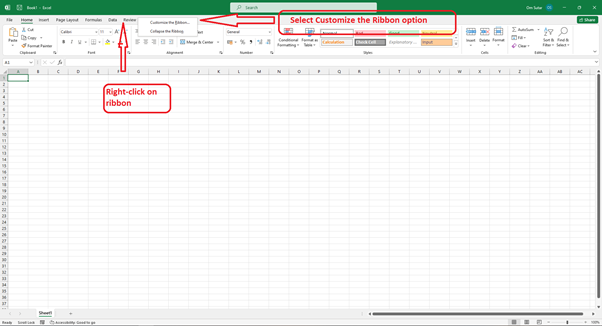
Check Developer box and click on OK
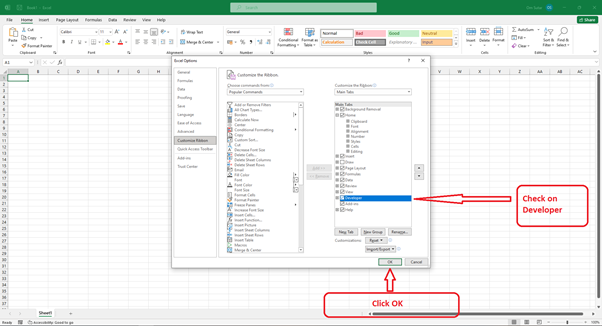
Approach 1: Using VBA Macro to Import Multiple Text Files by selecting folder containing all required text files
If you are familiar with Excel VBA (Visual Basic for Applications), you can leverage its programming capabilities to import multiple text files into separate sheets. This approach provides flexibility and customization options for handling specific requirements.
Step 1 ? To open the Visual Basic Editor in Excel click on the "Alt+F11" combination or go to the Developer tab in the ribbon and choose the Visual Basic option.
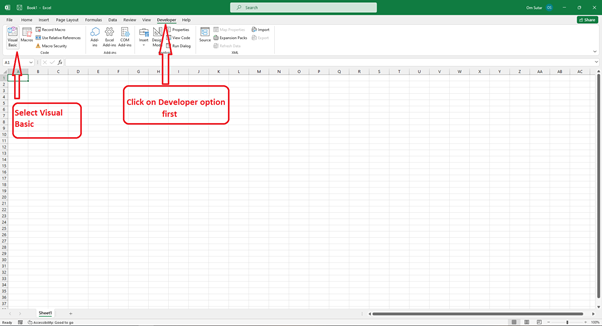
Step 2 ? In the Visual Basic Editor, click on "Insert" and select "Module" to insert a new module.
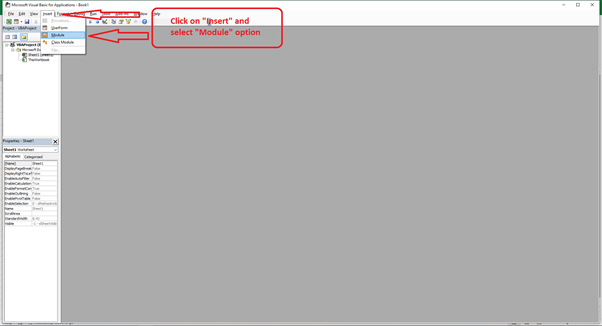
Step 3 ? In the module, paste the following VBA code ?
Sub LoadPipeDelimitedFiles()
'UpdatebyExtendoffice20181010
Dim xStrPath As String
Dim xFileDialog As FileDialog
Dim xFile As String
Dim xSheetCount As Long
Dim xWS As Worksheet
On Error GoTo ErrHandler
Set xFileDialog = Application.FileDialog(msoFileDialogFolderPicker)
xFileDialog.AllowMultiSelect = True
xFileDialog.Title = "Select a folder [Kutools for Excel]"
If xFileDialog.Show = -1 Then
xStrPath = xFileDialog.SelectedItems(1)
End If
If xStrPath = "" Then Exit Sub
Application.ScreenUpdating = False
xFile = Dir(xStrPath & "\*.txt*")
Do While xFile <> ""
Set xWS = Sheets.Add(After:=Sheets(Sheets.Count))
xWS.Name = Left(xFile, Len(xFile) - 4)
With xWS.QueryTables.Add(Connection:="TEXT;" & xStrPath & "" & xFile, Destination:=xWS.Range("A1"))
.Name = "a" & xSheetCount
.FieldNames = True
.RowNumbers = False
.FillAdjacentFormulas = False
.PreserveFormatting = True
.RefreshOnFileOpen = False
.RefreshStyle = xlInsertDeleteCells
.SavePassword = False
.SaveData = True
.AdjustColumnWidth = True
.RefreshPeriod = 0
.TextFilePromptOnRefresh = False
.TextFilePlatform = 437
.TextFileStartRow = 1
.TextFileParseType = xlDelimited
.TextFileTextQualifier = xlTextQualifierDoubleQuote
.TextFileConsecutiveDelimiter = False
.TextFileTabDelimiter = False
.TextFileSemicolonDelimiter = False
.TextFileCommaDelimiter = False
.TextFileSpaceDelimiter = False
.TextFileOtherDelimiter = "|"
.TextFileColumnDataTypes = Array(1, 1, 1)
.TextFileTrailingMinusNumbers = True
.Refresh BackgroundQuery:=False
End With
xFile = Dir
xSheetCount = xSheetCount + 1
Loop
Application.ScreenUpdating = True
Exit Sub
ErrHandler:
MsgBox "No txt files found.", , "Kutools for Excel"
End Sub
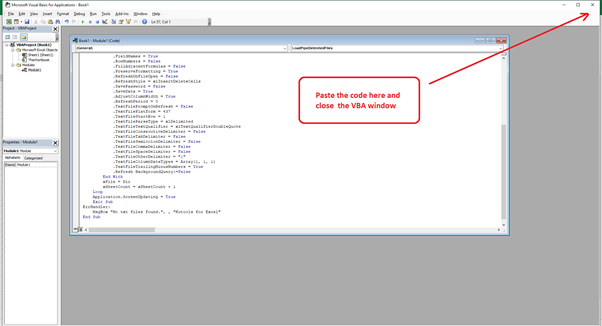
Step 4 ? Select "Macro" tab.
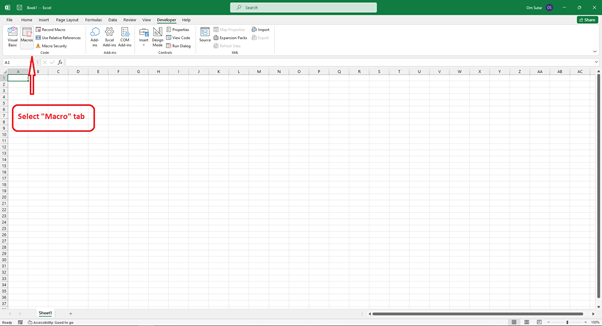
Step 5 ? Select available Macro and click on RUN
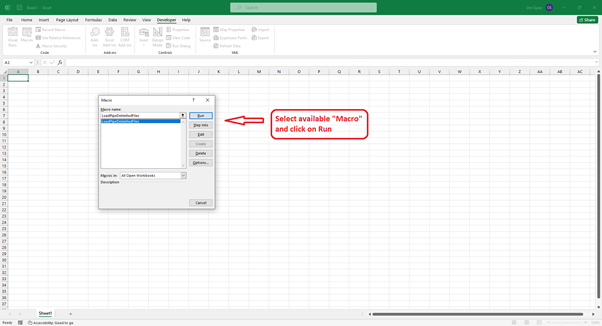
Step 6 ? It'll open window to choose folder containing all text file that needs to be imported. Select the folder and press OK.
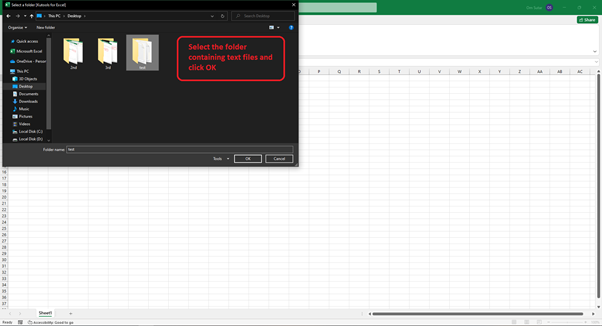
Excel will import the data from all the text files present in folder into separate sheets, with each sheet named after the corresponding file name.
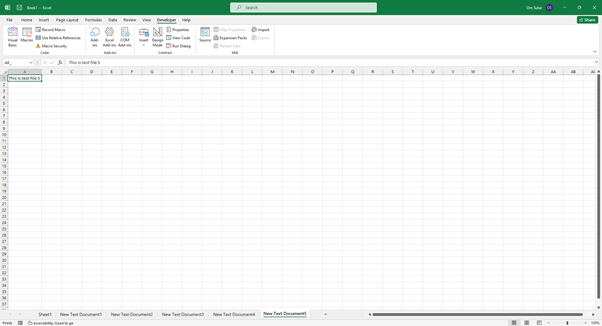
Approach 2: Using VBA Macro to Import Multiple Text Files by selecting files you want
Step 1 ? To open the Visual Basic Editor in Excel click on the "Alt+F11" combination or go to the Developer tab in the ribbon and choose the Visual Basic option.
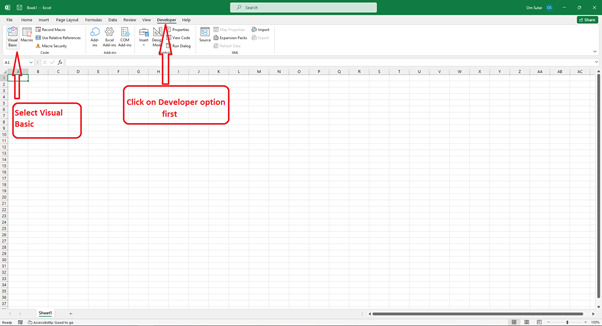
Step 2 ? In the Visual Basic Editor, click on "Insert" and select "Module" to insert a new module.
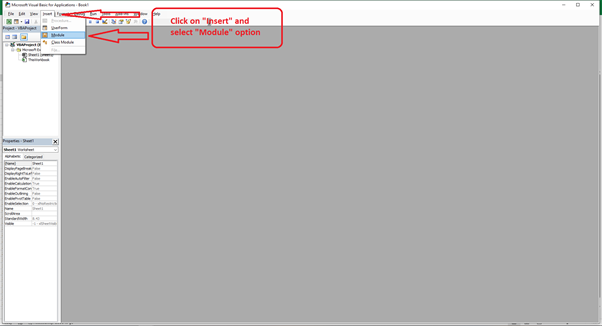
Step 3 ? In the module, paste the following VBA code ?
Sub CombineTextFiles()
'updateby Extendoffice
Dim xFilesToOpen As Variant
Dim I As Integer
Dim xWb As Workbook
Dim xTempWb As Workbook
Dim xDelimiter As String
Dim xScreen As Boolean
On Error GoTo ErrHandler
xScreen = Application.ScreenUpdating
Application.ScreenUpdating = False
xDelimiter = "|"
xFilesToOpen = Application.GetOpenFilename("Text Files (*.txt), *.txt", , "Kutools for Excel", , True)
If TypeName(xFilesToOpen) = "Boolean" Then
MsgBox "No files were selected", , "Kutools for Excel"
GoTo ExitHandler
End If
I = 1
Set xTempWb = Workbooks.Open(xFilesToOpen(I))
xTempWb.Sheets(1).Copy
Set xWb = Application.ActiveWorkbook
xTempWb.Close False
xWb.Worksheets(I).Columns("A:A").TextToColumns _
Destination:=Range("A1"), DataType:=xlDelimited, _
TextQualifier:=xlDoubleQuote, _
ConsecutiveDelimiter:=False, _
Tab:=False, Semicolon:=False, _
Comma:=False, Space:=False, _
Other:=True, OtherChar:="|"
Do While I < UBound(xFilesToOpen)
I = I + 1
Set xTempWb = Workbooks.Open(xFilesToOpen(I))
With xWb
xTempWb.Sheets(1).Move after:=.Sheets(.Sheets.Count)
.Worksheets(I).Columns("A:A").TextToColumns _
Destination:=Range("A1"), DataType:=xlDelimited, _
TextQualifier:=xlDoubleQuote, _
ConsecutiveDelimiter:=False, _
Tab:=False, Semicolon:=False, _
Comma:=False, Space:=False, _
Other:=True, OtherChar:=xDelimiter
End With
Loop
ExitHandler:
Application.ScreenUpdating = xScreen
Set xWb = Nothing
Set xTempWb = Nothing
Exit Sub
ErrHandler:
MsgBox Err.Description, , "Kutools for Excel"
Resume ExitHandler
End Sub
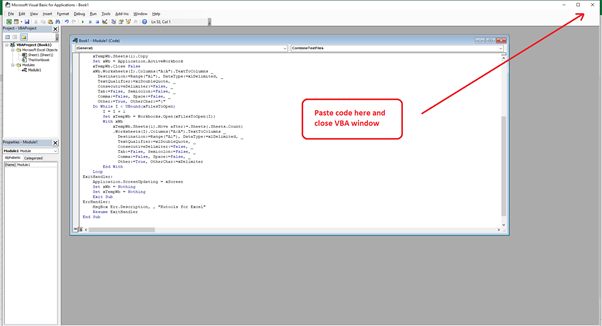
Step 4 ? Select "Macro" tab.
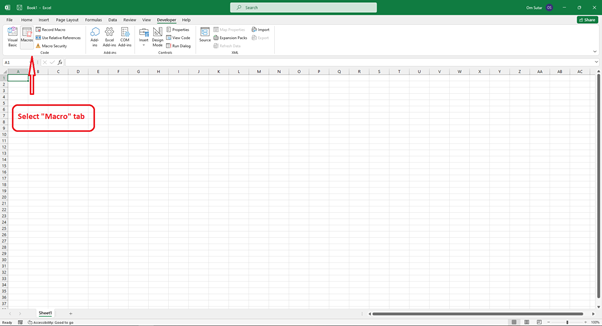
Step 5 ? Select available Macro and click on RUN.
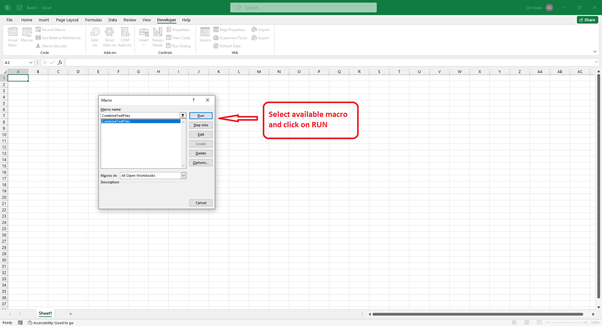
Step 6 ? It'll open a window to text files. Choose multiple text files by pressing ?ctrl' and clicking the file you want, then press OK.
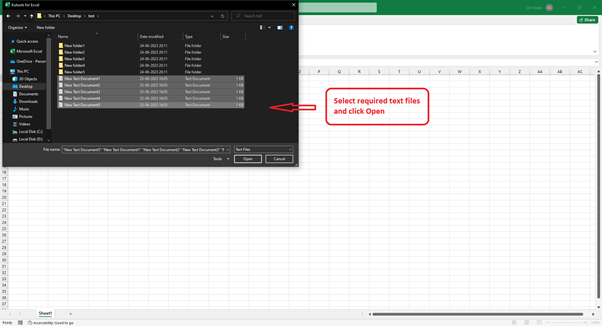
Excel will import the data from the text files into separate sheets, with each sheet named after the corresponding file name.
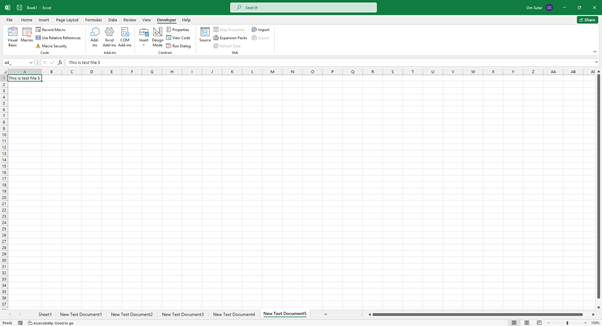
Conclusion
Importing text files as separate sheets with original names in Excel is a powerful feature that enhances your ability to manage and analyze data efficiently. In this article, we explored two approaches to accomplish this task. The first approach utilized Excel's Power Query Editor, allowing you to import and transform data from multiple text files effortlessly. The second approach involved using VBA macros to automate the import process, providing customization options for specific requirements.
Incorporate these techniques into your Excel workflow to streamline the import of text files, saving time and improving data management capabilities. Excel's versatile import capabilities empower you to work with data from various sources seamlessly, facilitating data analysis and decision-making processes.

